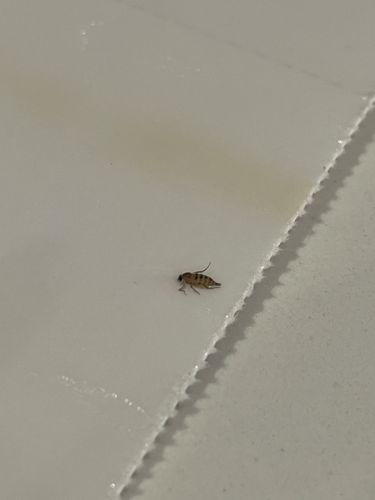Booklouse
Scientific Name: Psocoptera (various species)
Order & Family: Psocoptera (diverse families including Liposcelididae, Psocidae, etc.)
Size: 0.5 to 2 mm

Natural Habitat
Warm, humid environments with access to mold, fungi, or starchy materials. Commonly found indoors in old books, stored food, damp walls, and areas with high humidity.
Diet & Feeding
Feeds on fungi, mold, microscopic algae, dead insects, pollen, and starchy materials like bookbindings, wallpaper paste, and stored food products.
Behavior Patterns
Nocturnal, often avoid light. Rapid breeders given favorable conditions (warmth and high humidity). They are often found in large numbers when conditions are right, dispersing when resources become scarce or conditions unfavorable. Despite their name, not all species live in books; many are found in other damp environments.
Risks & Benefits
Generally harmless to humans; they do not bite or transmit diseases. However, large infestations can contaminate food products, damage books, and indicate high humidity and potential mold growth in a building, which can pose health risks (e.g., allergies) for sensitive individuals. They can be considered a nuisance pest. They play a minor role as decomposers in their natural outdoor habitats.
Identified on: 9/8/2025